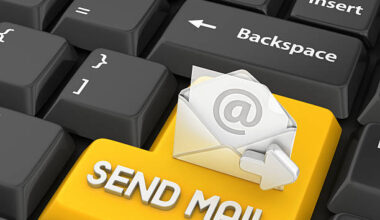
Ending an email can be tricky, especially when you are communicating with your boss, as the tone of your email can significantly impact the relationship.
A strong closing can make all the difference. It conveys professionalism and leaves a positive impression, especially in business emails.
On the other hand, a weak closing can come across as unprofessional, dismissive, or even insubordinate. So, how do you land the perfect closing every time?
In this blog post, we will explore the 10 best ways to end an email to your boss, ensuring maximum professionalism and leaving a lasting positive impact with effective email sign-offs.
Why Does Ending an Email to Your Boss Appropriately Matter?
Think of your email closing as the handshake at the end of a business meeting. It is the final touchpoint that leaves a lasting impression. A strong closing reinforces the message you’ve conveyed throughout the email and demonstrates your professionalism.
Here is why a well-crafted closing matter:
- Professionalism: A strong closing conveys respect for your boss’s time and position.
- Clarity: It ensures that your boss understands the steps or further action is required from them, reinforcing a polite email approach.
- Positive Impression: A professional closing leaves a good taste in your boss’s mouth, potentially influencing future interactions.
10 Best Ways to End an Email to Your Boss
Now that we understand the importance of a strong closing, let’s dive into the top 10 ways to end an email to your boss (with practical examples); and leave a lasting impression with a call to action.
1. Best Regards
“Best regards” is one of the most commonly used effective email closings in professional communication. This phrase strikes a perfect balance between formal and approachable, making it suitable for various contexts, including business emails.
Whether you’re sending a quick update or a more detailed report, “Best regards” conveys respect and professionalism without sounding overly stiff.
Below is an example of sending an email to your boss and ending it with best regards;

This closing is universally accepted and easily understood, making it an ideal choice for any email signature. It’s a reliable choice that assures your boss you value their time and opinion, while also leaving the door open for future communication.
2. Sincerely
“Sincerely” is another classic email closing that has stood the test of time and is often used in polite email communications.
It’s particularly effective for formal emails, such as job applications, and official reports, or when you’re addressing serious topics, ensuring you end an email professionally.
Using this phrase conveys a level of sincerity and professionalism that can make your correspondence more impactful, especially when you know well the recipient.
Example includes;

This closing is significant to your respect for the recipient and the subject matter discussed in the email. It’s straightforward and leaves little room for misinterpretation, making it an effective email ending.
3. Thank You
In a professional setting, expressing gratitude can go a long way. A simple “Thank you” at the end of your email acknowledges your boss’s efforts, time, or support.
This closing is particularly effective if you’re asking for assistance, feedback, or approval.
For instance;
Hi Sarah,
Thanks for your feedback on the project proposal. I’ve made the suggested changes and attached the updated version.
Thank you for your time and consideration.
[Your Name]”
Gratitude fosters positive relationships. Ending your email with “Thank you” shows that you recognize and appreciate your boss’s contributions, which can enhance your working relationship.
4. Looking Forward to Your Feedback
If you’ve sent your boss a proposal or a project update, ending with “Looking forward to your feedback” indicates that you value their opinion and are eager for their insights.
This phrase is effective when you want to encourage dialogue and demonstrate your willingness to improve.
Consider the illustration below:
Hi (boss’s name)
I’ve done my best to incorporate the feedback from our previous discussion, ensuring a professional email that meets your expectations. Please let me know if you have any further or require any additional information.
“Looking forward to your feedback,
[Your Name]”This closing shows initiative and receptiveness to constructive criticism. It invites your boss to engage further and reinforces a collaborative atmosphere.
5. Best Wishes
If you share a friendly rapport with your boss, “Best wishes” can add a personal touch to your email.
This closing maintains professionalism while also conveying warmth, making it suitable for less formal communications or when you want to foster a friendly work environment.
For instance:
Hi(Boss’s name)
I wanted to confirm our meeting on Tuesday at 2pm to discuss the new project.
“Best wishes,
[Your Name]”
“Best wishes” strikes a balance between professionalism and approachability. It can make your emails feel more relatable, which is especially important in today’s collaborative workplaces.
6. Respectfully
Using “Respectfully” as your email closing is a powerful choice, especially for sensitive topics or formal communications, ensuring a respectful and professional tone.
This phrase conveys a high level of deference, making it particularly suitable when discussing serious matters or delivering feedback.
This is demonstrated below:
Dear (Boss’s name)
I am writing to request a meeting to discuss my career goals. I am available on (dates).
Respectfully,
[Your Name]”
This closing reflects your understanding of the professional hierarchy and your respect for your boss’s position. It’s a way to reinforce your commitment to professionalism in all interactions, especially in business emails.
7. Warm Regards
“Warm regards” is a slightly more informal option that combines professionalism with a friendly tone, making it suitable for casual emails. It’s an excellent choice for emails where you want to convey both respect and approachability, making it perfect for team-oriented environments and casual tone exchanges.
For instance:
Hi(Boss’s name)
I’ve completed the presentation for tomorrow’s client meeting. Please let me know if you need anything else.
“Warm regards, which serves as a professional email sign-off.”
[Your Name]”
This closing fosters a sense of camaraderie and can help strengthen relationships within the workplace. It’s especially effective in teams that value open communication.
8. Thank You for Your Guidance
If your email is about a project or task that requires your boss’s input, ending with “Thank you for your guidance” is a thoughtful way to express appreciation and serve as a professional email closing line. It acknowledges their role in your work and reinforces the importance of their leadership.
Example:

Acknowledging your boss’s contributions can enhance your working relationship and demonstrate your appreciation for their support. It shows that you value their expertise and leadership.
9. I Appreciate Your Time
Time is a precious commodity in any professional setting, and acknowledging this can set you apart in your email sign-offs. Ending your email with “I appreciate your time” conveys respect for your boss’s busy schedule, particularly when you’re making requests and trying to end an email professionally.
Example includes:
Hi(Boss’s name)
I appreciate you taking the time to review my work. I’ll make the necessary changes.
“I appreciate your time, and I look forward to hearing your thoughts on this matter.”
[Your Name]”
This closing reinforces your understanding of your boss’s responsibilities and workload, serving as a thoughtful email sign-off. It’s a courteous way to acknowledge their effort in reviewing your email.
10. Take Care
If you have a more casual relationship with your boss, “Take care” can be an approachable and friendly way to close your email. However, use it judiciously, as it may not be appropriate for all professional contexts.
For instance:

This closing humanizes your communication, making it feel more personal. It’s best reserved for emails where you have established a rapport and feel comfortable using a more relaxed tone.
Tips for Email Sign-Offs
Include a Signature: Provide contact information and social media links.
Match the tone: Ensure the closing aligns with the email’s tone
Be consistent: Use a standard closing for all professional emails
Avoid Jargon: Steer clear of overly casual language
Final Thoughts
Choosing the right way to end an email to your boss is crucial for maintaining a professional image. Each of the closing phrases outlined here serves a specific purpose, allowing you to convey respect, appreciation, and professionalism.
Ready to refine your email communication? Start incorporating these closing phrases into your emails today and observe the positive impact they have on your professional relationships.
Now that you’ve learned the 10 best ways to end an email to your boss professionally, it’s your turn to share!
Leave a comment below and tell us your favorite closing phrase. Happy Emailing!






